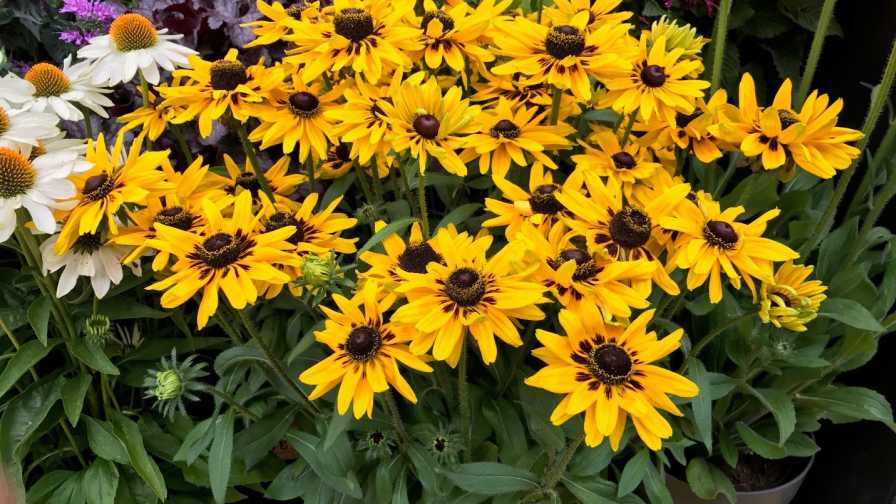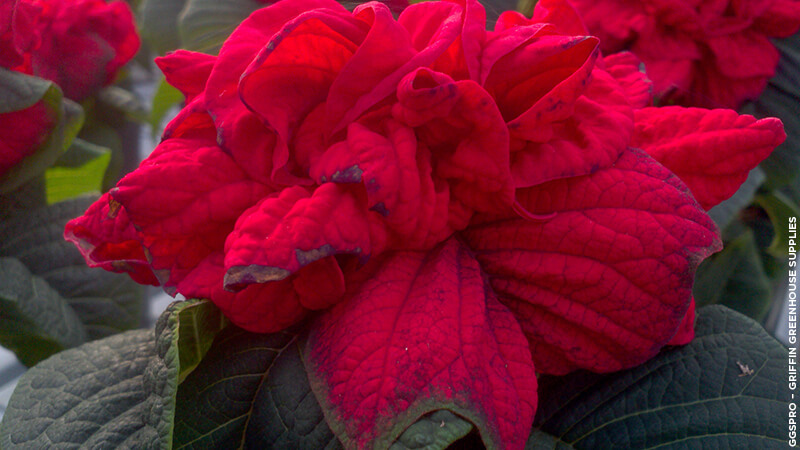Growing Tips for a New Rudbeckia Variety
 “SmileyZ, a new series of Rudbeckia from AB-Cultivars and Plants Nouveau, was bred to fill a pot quickly and make everyone who buys one smile, hence the name. The SmileyZ marketing campaign, Take Home a Smile, wants to encourage the world to smile more by bringing them a smile every day on their porch, patio, or in their garden.
“SmileyZ, a new series of Rudbeckia from AB-Cultivars and Plants Nouveau, was bred to fill a pot quickly and make everyone who buys one smile, hence the name. The SmileyZ marketing campaign, Take Home a Smile, wants to encourage the world to smile more by bringing them a smile every day on their porch, patio, or in their garden.
From a growing standpoint, this crop is very easy to program out, as it is a long-day bloomer, making it a great item for summer in large 8-inch or 10-inch deco containers.
Amanda Mattison, Head Grower at Pioneer Gardens, has been working with these Rudbeckia in both trials and full-scale production.
“They perform as advertised and finish in full bloom in a large pot in 16 weeks or less,” Mattison says. “The colors are very vibrant, and the selections are very dependable.”
Mattison starts with Stage 2 or 3 tissue culture liner plants to get the best branching. Within four weeks of delivery, the liner plugs need to be transplanted into a finishing sized container and immediately put outside to grow in full sun. The best time to start this process is when nighttime temperatures are cool but above frost. A bark/peat mix is used with HydraFiber mixed in to sustain moisture buffering during the summer and encourage better roots overall. Mattison suggests keeping proper spacing between pots to help plants bulk up when finishing.
Schedule plantings every three to four weeks from 50-cell liners, starting week 10 and finishing by week 26 to ensure multiple crops finishing and ready for retail from late spring through summer. Northern growers will have to add supplemental lighting if crops are started before Daylight Savings Time since Rudbeckia are long day bloomers. It is best to start your planting program as close to the start of long days for easiest and best results. No plant growth regulators are used to manage plant height. No foliar pinching is needed, but removing the first flowers will encourage better branching.
So far, Pioneer Gardens has experienced little to no pest issues with SmileyZ and no known diseases associated with Rudbeckia. However, crops should still be scouted regularly for pests and to maintain a good IPM program to keep pest and disease problems under control.
Mattison’s Recommendations for Growing Rudbeckia SmileyZ Successfully
- Fertilizer: Normal rate for crop, but extra potassium will ensure stem firmness
- Propagation: Tissue culture liners are best for good branching. But for fast cropping, bringing in 50-cell liners is the fastest way
- Plant growth regulators: None necessary. Pioneer Gardens did not need to use any PGRs to manage crop height.
- Lighting: Only if started during short days (late fall and winter)
- Pinching: Should not be necessary, but pinch first flowers to ensure better branching
- Growing media: Use a bark/peat mix with a fiber mixed-in for proper moisture. Mattison noticed great roots with HydraFiber.
- Irrigation: Flood-floors, rip-tubes, spaghetti liners, or overhead irrigation
- Planting/Scheduling: Plant every three to four weeks from 50-cell liners, starting from week 10 through week 26.
Pioneer Gardens, located on the outskirts of Deerfield, MA, began in 1996. Its focus became producing and marketing high-quality, perennial starter plants to wholesale growers and finishers throughout North America. Today, the company offer a complete line of field-grown, bare root, and greenhouse plugs of all types through direct sales and marketing. It is continuously improving its capabilities through mechanization and automation to meet customer demands and investing in the development of employee skills. Furthermore, it is always looking for ways to improve cultural practices and conduct business in an environmentally friendly way.









